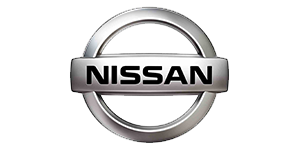Need Pricing quickly?
No problem, we have a Live team on hand to assist you. Click Start Now & enter your query.
![]()
No problem, we have a Live team on hand to assist you. Click Start Now & enter your query.
![]()
With its policy of inclusiveness and its support for students from challenging backgrounds, the Bradford University makes an important contribution to the economic and social regeneration of the local community. On average, 60 percent of first year home-based students come from families earning less than £10,000 annually (approximately $14,600 USD/year). Twenty percent of all engineering students register for the foundation year, which provides access to those who do not meet degree course requirements.
Consistently ranked number one for graduate employment in Yorkshire with joint first place in the North of England (The Times Good University Guide 2008), the University’s values are built on a history spanning the last century – values that emphasize the strong ethos of “Making Knowledge Work.”
Bradford University provides bachelors and masters-level accredited courses in civil and structural, electrical, mechanical, automotive and medical engineering through the School of Engineering, Design & Technology (EDT). The school currently has around 1,200 undergraduate and postgraduate students; about 40 percent of the students are from overseas.
“The employability of our engineering graduates primarily depends upon them having the right mix of knowledge and skills,” says George Rosala, CAE systems coordinator at the School of EDT. “The ability to harness the power of computer modeling and simulation for product development is increasingly important.”
Bradford University had been using CAD/CAM/CAE tools for years, but it was becoming increasingly clear that the school needed to upgrade to keep up with industry standards. In 2008, the decision to upgrade was finalized. There were three key criteria for the new system: an integrated CAD/CAM/CAE environment that would not take too long to learn; the ability to interface with modeling environments already in use; and a tool that had significant market share so that graduates were gaining skills valued by industry. In addition, the software had to be affordable.
The answer was a comprehensive package of NX product development technology and support provided by Siemens PLM Software and TEAM Engineering Ltd., a long-established Siemens partner. “NX gives us access to Synchronous Technology,” says Rosala. With Synchronous Technology, a user no longer has to choose between constraint-driven or history-free modeling, doesn’t need to be a programmer to re-use a model, and doesn’t have to worry about using data from multiple CAD systems. Synchronous Technology yields up to a 100 times faster design process. “We were looking forward to this enhancement for a long time,” says Rosala. “Now, by the time our graduates get into industry, they will have the latest skills using the latest software.”
The number of students using the Siemens software package on a daily basis is between 100 and 200; a total of around 500 over the course of a year. At Level 1, students explore the concepts of wireframe, surface and solid modeling, drafting and assemblies. At Level 2, they study CNC machining and some basic finite element analysis (FEA). Level 3 and masters students develop their finite element skills by working on simulation and advanced simulation projects.
“Students find NX very user-friendly so they are not worried about losing time in picking up CAD skills despite the constraints of a twelve-week semester,” says Rosala. “In addition, we receive excellent support from TEAM Engineering, whose experienced engineers solve any problems that arise. They look after licensing and provide the technical assistance that might be needed on the advanced projects undertaken by final year and master students.”
The school of EDT uses other modeling-simulation packages such as Abaqus, Adams and Moldflow and an interface between these different environments was an important consideration. “NX meets our needs perfectly,” Rosala notes.
NX gives students the freedom to design as they wish. Engineering students acquire the capabilities they need to work in a creative environment and design students gain a very strong sense of engineering. “Our product is the engineer and our graduates are much better engineers when they have acquired skills in CAD/CAM/CAE,” Rosala continues. “If a student gets an industrial placement, a good placement report and an offer of employment after graduation, we believe that we have done our job well. We have never had a situation in which our students had nowhere to go for a placement.”
An estimated 96 percent of the engineering students in a recent graduating class were employed or receiving further training six months after graduation, with the figure rising to 100 percent for mechanical and automotive engineering graduates. Final-year students are often sponsored and, as a whole, the school receives approximately 17 percent of its revenue from research income. This amounted to approximately £2 million (nearly $3 million USD) in a recent year. Recruitment often exceeds targets and the school of EDT has a franchising presence in Malaysia and is currently developing links in China.
“The educational package we receive from Siemens and TEAM Engineering is a real benefit,” Rosala concludes. “It helps us balance our budget each year and allows us to further invest in additional software and training to support our students. Most significantly, it is helping us to retain our international reputation by supporting recruitment, industrial placement, employability and research income.”
George Rosala, CAE Systems Coordinator, University of Bradford
George Rosala, CAE Systems Coordinator, University of Bradford
